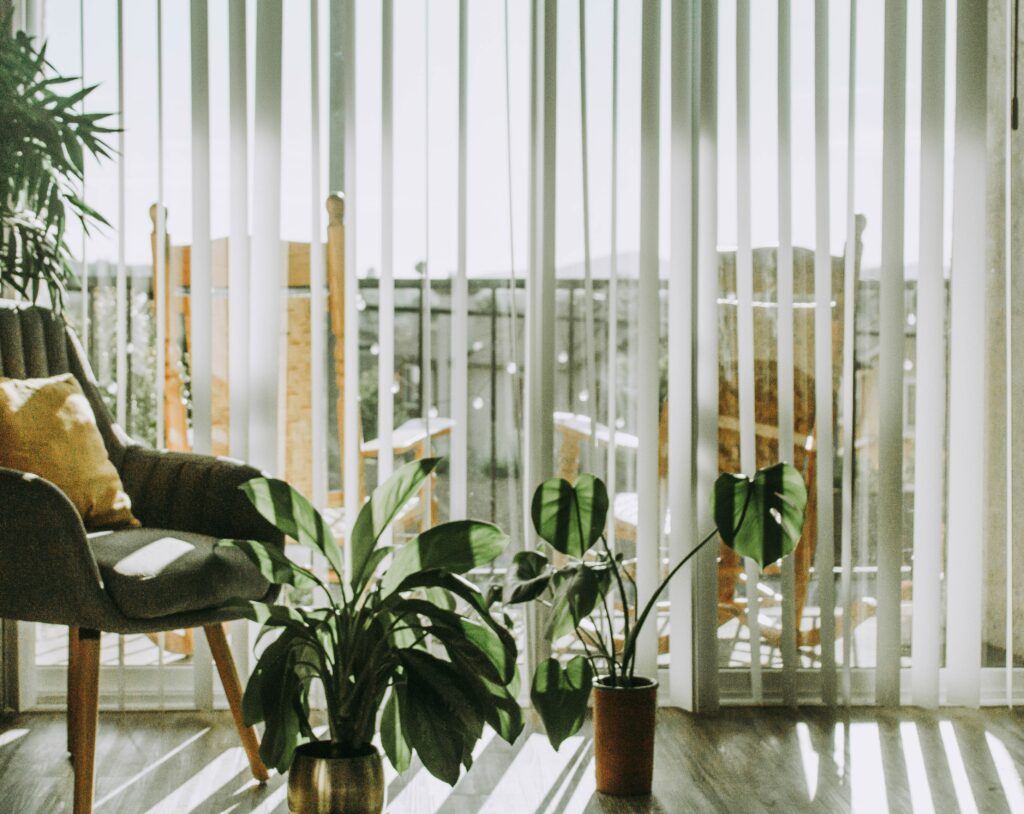Great lighting is one of the most important factors in helping plants thrive. Understanding the lighting conditions your home receives and how your location changes throughout the seasons will uncover the plants that will do best in your home. With a coveted southern exposure, you’ll be able to easily grow mostly all tropical or desert plants that thrive in the bright indirect lighting conditions provided by sunny southern exposures. Below, we’ll uncover the science behind sun intensity and find the best plants for south-facing windows that will thrive in your home.
Understanding the Sunlight from South-Facing Windows
Our sun rises in the east and sets in the west. Having south-facing windows means your home gets the full spectrum of available sunlight between sunrise and sunset, with the intensity varying throughout the day, but being strongest around noon.
Beyond the sun’s daily motion, your latitude — the distance from the equator running north and south — also plays a role in determining how much sun energy reaches your plants with a southern exposure. In the winter, the Earth’s tilt is furthest away from the sun, meaning you can expect much less solar energy reaching your plants. This loss of light energy is more pronounced the further you get from the equator.
This means that if you live in the northern hemisphere, your plants will likely receive much more solar energy during the hot summer months of May – August, with winters proving substantially less sunlight from November – March. But a southern exposure pointed towards the equator means you’ll be maximizing your available solar energy regardless of the time of year. For southern-facing windows, this dormancy means plants will also be more likely to dry out compared to northern or eastern windows that typically get less winter sun.
Understanding your directional sunlight and how the Sun’s energy changes seasonally at your location will help you find the best plants for south-facing windows.
Other Factors Affecting Natural Light
Understanding the direction and intensity of the Sun’s rays is important, but other environmental factors play a role in how much sunlight reaches your plants. Nearby trees or buildings may block some sunlight, reducing available solar energy for your plants. Keeping plants further away from windows or closing the curtains also has a huge impact on energy potential — even if you have a bright and sunny room and only set your plants a few feet away from the window.
If you have obstacles blocking your south-facing windows, or find blinds or furniture blocking your ideal plant placement, getting an inexpensive grow light will fill in the energy gap for your plants. These lights come in a variety of designs and have features like timers to make them feel as natural as the daylight cycle, so you can still find the best plants for south-facing windows.
The Best Plants For South-Facing Windows
A home with southern exposures has ideal lighting conditions for many tropical houseplants. The strong light from the south matches the medium to high indirect lighting needs of many of these beautiful plants.
Monsteras, Jade plants, Money Trees, and Philodendron Birkins are just some of the many plants that would thrive with a southern exposure. These plants are readily available at most nurseries, inexpensive, beautiful and can thrive in the bright indirect lighting conditions a southern exposure provides.
How can you tell if your plant is happy and getting enough energy? If your plant isn’t receiving enough light, it will show early warning signs that it needs more sunlight. Look for leaves with less intensity, growth that looks long or stringy, or a decline in new growth. All of these factors could be red flags that your plant isn’t receiving the minimum amount of light it needs to survive.
North, south, east or west — there are no bad exposures for sunlight. But understanding the science behind the natural light your home receives will make you a more informed plant parent. Be sure to read our guides on west-facing, east-facing and north-facing windows if your home has rooms with other lighting needs.
And finally, lighting is just one factor in healthy plant care. Be sure to read our guides like our favorite air purifying plants for all of your specific plant needs.

